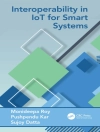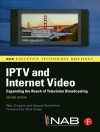Ian Moir and Allan Seabridge
Military avionics is a complex and technically challenging field which requires a high level of competence from all those involved in the aircraft design and maintenance. As the various systems on board an aircraft evolve to become more and more inter-dependent and integrated, it is becoming increasingly important for designers to have a holistic view and knowledge of aircraft systems in order to produce an effective design for their individual components and effectively combine the systems involved.
This book introduces the military roles expected of aircraft types and describes the avionics systems required to fulfil these roles. These range from technology and architectures through to navigations systems, sensors, computing architectures and the human-machine interface. It enables students to put together combinations of systems in order to perform specific military roles.
- Sister volume to the authors’ previous successful title ‘Civil Avionics Systems’
- Covers a wide range of military aircraft roles and systems applications
- Offers clear and concise system descriptions
- Includes case studies and examples from current projects
- Features full colour illustrations detailing aircraft display systems
Military Avionics Systems will appeal to practitioners in the aerospace industry across many disciplines such as aerospace engineers, designers, pilots, aircrew, maintenance engineers, ground crew, navigation experts, weapons developers and instrumentation developers. It also provides a valuable reference source to students in the fields of systems and aerospace engineering and avionics.
Table of Content
Series preface xvii
Acknowledgements xix
About the authors xxi
Introduction 1
1 Military roles 7
1.1 Introduction 7
1.2 Air superiority 8
1.2.1 Role description 8
1.2.2 Key performance characteristics 8
1.2.3 Crew complement 9
1.2.4 Systems architecture 9
1.2.5 Air superiority – aircraft types 11
1.3 Ground attack 11
1.3.1 Role description 11
1.3.2 Key performance characteristics 11
1.3.3 Crew complement 12
1.3.4 Systems architecture 12
1.3.5 Ground attack – aircraft types 12
1.4 Strategic bomber 12
1.4.1 Role description 12
1.4.2 Key performance characteristics 14
1.4.3 Crew complement 14
1.4.4 Systems architecture 14
1.4.5 Strategic bomber – aircraft types 15
1.5 Maritime patrol 16
1.5.1 Role description 16
1.5.2 Anti-surface unit warfare (ASu W) role 17
1.5.3 Anti-submarine warfare (ASW) role 17
1.5.4 Search and rescue (SAR) role 18
1.5.4.1 Datum searches 19
1.5.4.2 Area searches 20
1.5.4.3 Scene-of-action commander 20
1.5.5 Exclusive economic zone protection 21
1.5.5.1 Oil and gas rig patrols 21
1.5.5.2 Anti-pollution 21
1.5.5.3 Fishery protection 21
1.5.5.4 Customs and excise cooperation 21
1.5.6 Key performance characteristics 22
1.5.7 Crew complement 22
1.5.8 Systems architecture 22
1.5.9 MPA aircraft types 22
1.6 Battlefield surveillance 24
1.6.1 Role description 24
1.6.2 Key performance characteristics 24
1.6.3 Crew complement 25
1.6.4 Systems architecture 25
1.6.5 Battlefield surveillance aircraft types 25
1.7 Airborne early warning 26
1.7.1 Role description 26
1.7.2 Key performance characteristics 27
1.7.3 Crew complement 27
1.7.4 Systems architecture 27
1.7.5 AEW aircraft types 28
1.8 Electronic warfare 29
1.8.1 Role description 29
1.8.2 Electronic countermeasures 29
1.8.3 Electronic support measures 30
1.8.4 Signals intelligence (SIGINT) 30
1.8.5 Key performance characteristics 31
1.8.6 Crew complement 31
1.8.7 Systems architecture 32
1.8.8 Example aircraft types 32
1.9 Photographic reconnaissance 32
1.9.1 Role description 32
1.9.2 Key performance characteristics 34
1.9.3 Crew complement 34
1.9.4 Systems architecture 34
1.9.5 Typical aircraft types 34
1.10 Air-to-air refuelling 35
1.10.1 Role description 35
1.10.2 Key performance characteristics 37
1.10.3 Crew complement 37
1.10.4 Systems architecture 37
1.10.5 Aircraft types 38
1.11 Troop/materiel transport 39
1.11.1 Role description 39
1.11.2 Key performance characteristics 39
1.11.3 Crew complement 39
1.11.4 Systems architecture 39
1.11.5 Typical aircraft types 40
1.12 Unmanned air vehicles 41
1.13 Training 43
1.13.1 Typical aircraft types 45
1.14 Special roles 45
1.14.1 Examples of special roles 45
1.15 Summary 45
Further reading 46
2 Technology and architectures 47
2.1 Evolution of avionics architectures 47
2.1.1 Distributed analogue architecture 49
2.1.2 Distributed digital architecture 50
2.1.3 Federated digital architecture 52
2.1.4 Integrated modular architecture 54
2.1.5 Open architecture issues 54
2.1.6 Impact of digital systems 56
2.1.7 Response of the services to digital avionics systems issues 57
2.1.8 Need to embrace COTS 58
2.2 Aerospace-specific data buses 60
2.2.1 Tornado serial 60
2.2.2 Arinc 429 62
2.2.3 Mil-std-1553b 64
2.2.4 Stanag 3910 67
2.3 JIAWG architecture 70
2.3.1 Generic JIAWG architecture 70
2.3.2 High-speed data bus 72
2.3.3 PI bus 73
2.3.4 TM bus 73
2.3.5 Obsolescence issues 73
2.4 COTS data buses 74
2.4.1 Fibre channel 75
2.4.2 Fibre channel options 77
2.4.3 IEEE 1394 firewire 77
2.5 Real-time operating systems 78
2.5.1 Key attributes 78
2.5.2 Safety 79
2.5.3 Software partitioning 80
2.5.4 Software languages 82
2.5.5 Security 82
2.6 RF integration 83
2.6.1 Primary radar evolution 84
2.6.1.1 Independent systems of the 1950s 84
2.6.1.2 Integrated systems of the 1960s and 1970s 85
2.6.1.3 Integrated modular architecture of the 1990s 86
2.6.2 JIAWG RF subsystem integration 87
2.7 Pave Pace/F-35 shared aperture architecture 94
References 97
3 Basic radar systems 99
3.1 Basic principles of radar 99
3.2 Radar antenna characteristics 104
3.3 Major radar modes 107
3.3.1 Air-to-air search 107
3.3.2 Air-to-air tracking 108
3.3.3 Air-to-air track-while-scan 109
3.3.4 Ground mapping 110
3.4 Antenna directional properties 111
3.5 Pulsed radar architecture 112
3.5.1 Pulsed radar components 112
3.5.1.1 Modulator 113
3.5.1.2 Transmitter 113
3.5.1.3 Antenna 113
3.5.1.4 Receiver 114
3.5.1.5 Video processor 114
3.5.2 Pulsed modulation 114
3.5.3 Receiver characteristics 116
3.5.3.1 Noise 116
3.5.3.2 Clutter 122
3.5.4 Radar range equation 122
3.6 Doppler radar 123
3.7 Other uses of radar 124
3.7.1 Frequency modulation ranging 124
3.7.2 Terrain-following radar 125
3.7.3 Continuous wave illumination 126
3.7.4 Multimode operation 127
3.8 Target tracking 128
3.8.1 Range tracking 128
3.8.2 Angle tracking 129
3.8.2.1 Sequential lobing 129
3.8.2.2 Conical scan 130
3.8.2.3 Monopulse 132
References 134
4 Advanced radar systems 135
4.1 Pulse compression 135
4.1.1 Coherent transmission 137
4.1.2 Fourier transform 140
4.2 Pulsed Doppler operation 140
4.2.1 Range ambiguities 143
4.2.2 Effect of the PRF on the frequency spectrum – Doppler ambiguities 144
4.2.3 Range and Doppler ambiguities 145
4.3 Pulsed Doppler radar implementation 149
4.3.1 Receiver 150
4.3.2 Signal processor 150
4.3.3 Radar data processor 154
4.4 Advanced antennas 156
4.4.1 Principle of the phased array 156
4.4.2 Planar arrays 157
4.4.3 Electronically scanned array 158
4.4.4 Active electronically steered array (AESA) 160
4.5 Synthetic aperture radar 164
4.6 Low observability 170
4.6.1 Factors affecting the radar cross-section 173
4.6.2 Reducing the RCS 178
4.6.3 Comparative RCS values 179
4.6.4 Low probability of intercept operation 180
References 181
5 Electrooptics 183
5.1 Introduction 183
5.2 Television 186
5.3 Night-vision goggles 189
5.4 IR imaging 191
5.4.1 IR imaging device 194
5.4.2 Rotating scanner 196
5.4.3 Planar image 197
5.4.4 Focal plane array or ‘staring array’ 198
5.4.5 IR detector technology 199
5.5 IR tracking 202
5.5.1 IR seeker heads 202
5.5.2 Image tracking 204
5.5.3 IR search and track systems 205
5.6 Lasers 206
5.6.1 Principles of operation 207
5.6.2 Laser sensor applications 211
5.6.3 US Air Force airborne laser (ABL) 214
5.6.4 Laser safety 215
5.7 Integrated systems 216
5.7.1 Electrooptic sensor fusion 216
5.7.2 Pod installations 218
5.7.3 Turret installations 220
5.7.4 Internal installations 224
References 228
6 Electronic warfare 229
6.1 Introduction 229
6.2 Signals intelligence (SIGINT) 233
6.2.1 Electronic intelligence (ELINT) 234
6.2.2 Communications intelligence (COMINT) 236
6.3 Electronic support measures 238
6.4 Electronic countermeasures and counter-countermeasures 241
6.4.1 Noise jamming 241
6.4.1.1 Burnthrough 243
6.4.2 Deception jamming 244
6.4.3 Deployment of the jamming platform 245
6.4.4 Low probability of intercept (LPI) radar 246
6.5 Defensive aids 247
6.5.1 Radar warning receiver 248
6.5.2 Missile warning receiver 249
6.5.3 Laser warning systems 249
6.5.4 Countermeasure dispensers 250
6.5.4.1 Chaff and flares 251
6.5.4.2 Towed decoy 252
6.5.5 Integrated defensive aids systems 253
6.5.5.1 AN/APG-79 AESA radar 253
6.5.5.2 AN/ALR-67 radar warning receiver 253
6.5.5.3 AN/ALQ-214 integrated defensive electronic countermeasures (IDECM) 254
6.5.5.4 AN/ALE-47 countermeasure dispenser 255
References 256
7 Communications and identification 257
7.1 Definition of CNI 257
7.1.1 RF spectrum 258
7.1.2 Communications control systems 259
7.2 RF propagation 259
7.2.1 High frequency 261
7.2.2 Very high frequency 262
7.2.3 Satellite communications 264
7.3 Transponders 266
7.3.1 Air traffic control (ATC) transponder – mode S 267
7.3.2 Traffic collision and avoidance system 269
7.3.3 Automatic dependent surveillance – address mode (ADS-A) 272
7.3.4 Automatic dependent surveillance – broadcast mode (ADS-B) 272
7.3.5 Indentification friend or foe (IFF) 272
7.4 Data links 273
7.4.1 JTIDS operation 275
7.4.2 Other data links 277
7.5 Network-centric operations 277
References 279
8 Navigation 281
8.1 Navigation principles 281
8.1.1 Introduction 281
8.1.2 Basic navigation 282
8.2 Radio navigation 284
8.2.1 Oceanic crossings 285
8.3 Inertial navigation fundamentals 286
8.4 Satellite navigation 287
8.4.1 Differential GPS 288
8.4.2 Wide-area augmentation system (WAAS) 288
8.4.3 Local-area augmentation system (LAAS) 289
8.5 Integrated navigation 290
8.5.1 Sensor usage – phases of flight 291
8.5.2 GPS overlay programme 292
8.5.3 Categories of GPS receiver 292
8.6 Flight management system 292
8.6.1 Fms Cdu 294
8.6.2 FMS functions 296
8.6.3 Lnav 297
8.6.4 Airway navigation 298
8.6.5 Area navigation 299
8.6.6 Vnav 299
8.6.7 Four-dimensional navigation 299
8.6.8 Full performance based navigation 299
8.6.9 FMS procedures 300
8.6.10 Traffic collision and avoidance system (TCAS) 300
8.6.11 GPWS and EGPWS 300
8.7 Navigation aids 302
8.7.1 Automatic direction finding 303
8.7.2 Very high-frequency omnirange (VOR) 303
8.7.3 Distance-measuring equipment (DME) 303
8.7.4 Tacan 304
8.7.5 Vortac 305
8.7.6 Hyperbolic navigation systems – LORAN-C 305
8.7.7 Instrument landing system 307
8.7.8 Microwave landing system (MLS) 309
8.8 Inertial navigation 310
8.8.1 Principles of operation 310
8.8.2 Stand-alone inertial navigation system 311
8.8.3 Air data and inertial reference systems (ADIRS) 313
8.8.4 Inertial platform implementations 315
8.8.5 Space axes to the Greenwich meridian 316
8.8.6 Earth axes to geographic axes 316
8.8.7 Geographic to great circle (navigation) 318
8.8.8 Great circle/navigation axes to body axes (strapdown) 319
8.8.9 Platform alignment 319
8.8.9.1 Platform levelling 320
8.8.9.2 Gyrocompass alignment 320
8.8.10 Historical perspective – use of inertial platforms 321
8.9 Global navigation satellite systems 322
8.9.1 Introduction to GNSS 322
8.9.2 Principles of operation 323
8.9.3 Integrity features 324
8.9.4 GPS satellite geometry 325
8.10 Global air transport management (GATM) 325
8.10.1 Communications 326
8.10.1.1 Air-to-ground VHF data link 326
8.10.1.2 Air-to-ground SATCOM communications 327
8.10.1.3 HF data link 327
8.10.1.4 8.33 k Hz VHF voice communications 327
8.10.1.5 Protected ILS 328
8.10.2 Navigation 328
8.10.2.1 Area navigation (RNAV) 328
8.10.2.2 RNP RNAV and actual navigation performance 329
8.10.2.3 Required navigation performance (RNP) 329
8.10.2.4 RNAV standards within Europe 329
8.10.2.5 Rvsm 330
8.10.2.6 RVSM implementation 331
8.10.2.7 Differential GPS enhancements 331
8.10.3 Surveillance 332
References 333
9 Weapons carriage and guidance 335
9.1 Introduction 335
9.2 F-16 Fighting Falcon 336
9.2.1 F-16 evolution 337
9.2.2 F-16 mid-life update 340
9.2.3 F-16 E/F (F-16 block 60) 343
9.3 AH-64 C/D Longbow Apache 345
9.3.1 Baseline system 345
9.3.2 Longbow Apache 345
9.3.3 Modernisation of TADS/PNVS 348
9.3.4 Weapons 349
9.4 Eurofighter Typhoon 349
9.4.1 Sensors and navigation 352
9.4.2 Displays and controls 352
9.4.3 Flight control 353
9.4.4 Utilities control 353
9.4.5 Systems integration 353
9.4.6 Survival/countermeasures 354
9.4.7 Weapons 354
9.5 F/A-22 Raptor 357
9.5.1 Introduction 357
9.5.2 AESA radar 357
9.5.3 Electronic warfare and electronic support measures 358
9.5.4 Cni 360
9.5.5 Displays/cockpit 360
9.5.6 Vehicle management system 361
9.5.7 Weapons 361
9.6 Nimrod MRA 4 361
9.6.1 Navigation and displays 363
9.6.2 Utilities control 365
9.6.3 Communications 365
9.6.4 Mission and sensor systems 366
9.6.5 Dass 366
9.6.6 Weapons and stores 367
9.7 F-35 joint strike fighter 367
9.7.1 Integrated common processors 368
9.7.2 AESA radar 368
9.7.3 Integrated EW/CNI and EO systems 368
9.7.4 Displays suite 369
9.7.5 Vehicle management system 369
9.7.6 Weapons 369
9.7.7 Gun 370
9.8 MIL-STD-1760 standard stores interface 370
9.9 Air-to-air missiles 373
9.9.1 AIM-9 Sidewinder 373
9.9.2 Aim-120 Amraam 374
9.9.3 Aim-132 Asraam 375
9.10 Air-to-ground ordnance 375
9.10.1 Wind-corrected munition dispenser 376
9.10.2 Joint direct attack munition 376
9.10.3 Agm-88 Harm 377
9.10.4 Alarm 377
9.10.5 Storm Shadow/SCALP EN 377
Resources 378
References 378
10 Vehicle Management Systems 379
10.1 Introduction 379
10.2 Historical development of control of utility systems 381
10.3 Summary of utility systems 383
10.3.1 Mechanical systems 383
10.3.2 Crew systems 383
10.3.3 Power systems 383
10.3.4 Fuel system 384
10.3.5 Air systems 384
10.3.6 Electrical power distribution systems 384
10.3.7 Vehicle management system (VMS) 384
10.3.8 Prognostics and health management 385
10.4 Control of utility systems 385
10.5 Subsystem descriptions 389
10.5.1 Mechanical systems 390
10.5.1.1 Primary flight controls 390
10.5.1.2 Secondary flight controls 392
10.5.1.3 Landing gear 392
10.5.1.4 Wheels, brakes and tyres 393
10.5.1.5 Arrestor hook/brake parachute 393
10.5.1.6 Actuation mechanisms 394
10.5.2 Crew systems 394
10.5.2.1 Crew escape 394
10.5.2.2 Aircrew clothing 394
10.5.2.3 Life support 395
10.5.2.4 Oxygen/OBOGS 395
10.5.2.5 Canopy jettison 397
10.5.3 Power systems 397
10.5.3.1 Propulsion system 397
10.5.3.2 Secondary power 397
10.5.3.3 Emergency power 398
10.5.4 Electrical power generation and distribution 399
10.5.4.1 F/A-18E/F Super Hornet 399
10.5.4.2 F/A-22 Raptor 399
10.5.5 Hydraulic power generation and distribution 400
10.5.6 Fuel systems 401
10.5.7 Air systems 403
10.5.8 Electrical utilisation systems 405
10.5.9 Prognostics and health management 405
10.6 Design considerations 406
10.6.1 General 406
10.6.2 Processor and memory 407
10.6.3 Interfacing 407
10.6.4 Software 408
10.6.5 Obsolescence 408
10.6.6 Human–machine interface 409
References 410
Further reading 410
11 Displays 411
11.1 Introduction 411
11.2 Crew station 412
11.2.1 Hawker Siddley (BAe) Harrier GR.Mk1 and GR.Mk 3
(RAF) and AV-8A (USMC) 412
11.2.2 Mc Donnell Douglas F/A-18 Hornet 413
11.2.3 Eurofighter Typhoon 415
11.2.4 Lockheed Martin F-22 Raptor 416
11.2.5 Boeing (Mc Donnell Douglas/Hughes) AH-64D Longbow Apache 417
11.3 Head-up display 418
11.3.1 HUD principles 419
11.3.2 Collimating (refractive optics) head-up display 420
11.3.3 Field of view 421
11.3.4 Collimating (refractive) HUD – examples 421
11.3.4.1 British Aerospace Harrier GR.Mk1 and GR.Mk 3 421
11.3.4.2 Mc Donnell Douglas/British Aerospace Night-Attack Harrier II (GR-7 and AV-8B) 422
11.3.5 Pupil-forming (reflective/diffractive) head-up displays 423
11.3.6 Pupil-forming (reflective/diffractive) HUD – examples 425
11.3.6.1 F16 LANTIRN HUD – multibounce quasi-axial configuration 425
11.3.6.2 Eurofighter Typhoon HUD – single-element off-axis configuration 426
11.3.7 Head-up display functional description 427
11.3.8 Image generation 429
11.3.9 HUD symbology and principles of use 430
11.3.9.1 Primary flight data 431
11.3.9.2 Navigation symbology 432
11.3.9.3 Air-to-surface weapon aiming 432
11.3.9.4 Air-to-air weapon aiming 433
11.4 Helmet-mounted displays 434
11.4.1 HMD physiological and environmental aspects 436
11.4.2 Head tracker 437
11.4.3 Optical head tracker 438
11.4.4 Electromagnetic head tracker 438
11.4.5 HMD accuracy and dynamic performance 438
11.4.6 HMD optical configurations 439
11.4.7 Helmet-mounted displays – examples 442
11.4.7.1 Integrated helmet and display sight system (IHADS) 442
11.4.7.2 Helmet-mounted sight 442
11.4.7.3 Joint helmet-mounted cueing system (JHMCS) 443
11.4.7.4 Eurofighter Typhoon HMD 444
11.4.7.5 Joint strike fighter HMD 446
11.4.8 Helmet-mounted display functional description 447
11.4.9 Binocular day/night HMD architectures 448
11.4.10 HMD symbology 448
11.4.11 HMD as a primary flight reference 449
11.5 Head-down displays 450
11.5.1 CRT multifunction head-down display 450
11.5.1.1 Shadow-mask CRT 450
11.5.1.2 X/Y deflection amplifier 452
11.5.1.3 Shadow-mask CRT characteristics 452
11.5.1.4 CRT MFD: principles of operation 453
11.5.1.5 F/A-18 and AV-8B multipurpose colour display (MPCD) 453
11.5.2 AMLCD multifunction head-down display 455
11.5.2.1 AMLCD display head assembly 455
11.5.2.2 Backlight 457
11.5.2.3 AMLCD characteristics 458
11.5.2.4 AMLCD sourcing 459
11.5.2.5 AMLCD MFD: principles of operation 459
11.5.2.6 Integrated display unit 460
11.6 Emerging display technologies 461
11.6.1 Microdisplay technologies 461
11.6.2 High-intensity light sources 462
11.6.3 Transmissive LCD 462
11.6.4 Reflective LCD 462
11.6.5 Digital micromirror device 463
11.6.6 Rear-projection ‘big picture’ head-down display 466
11.6.7 Solid-state helmet-mounted display 467
11.6.8 Organic light-emitting diodes (OLEDs) 469
11.6.9 Virtual retinal displays 470
11.7 Visibility requirements 471
11.7.1 Military requirements 471
11.7.1.1 Head-down display: high ambient – sun rear 472
11.7.1.2 Head-down display: high ambient – sun forward 472
11.7.1.3 Head-up display and helmet-mounted display: high ambient – sun forward 473
11.7.1.4 Low ambient – dusk/dawn transition 474
11.7.1.5 Night 474
11.7.2 US Do D definitions and requirements 475
11.7.3 European (Eurofighter Typhoon) definitions and requirements 475
11.7.4 Viewability examples 476
11.7.4.1 AMLCD head-down display 476
11.7.4.2 Head-up display 477
11.7.4.3 Night-vision imaging system compatibility 477
References 480
Bibliography 483
Commercial handbooks, standards and specifications 484
Military handbooks, standards and specifications 485
Advisory circulars 485
Standards 486
Technical standing orders 486
Useful websites 486
Glossary 487
Units 499
Aircraft types 500
Index 503
About the author
After 20 years in the Royal Air Force,
Ian Moir went on to Smiths Industries in the UK where he was involved in a number of advanced projects. Since retiring from Smiths he is now in demand as a highly respected consultant. Ian has a broad and detailed experience working in aircraft avionics systems in both military and civil aircraft. From the RAF Tornado and Apache helicopter to the Boeing 777, Ian’s work has kept him at the forefront of new system developments and integrated systems implementations. He has a special interest in fostering training and education in aerospace engineering.
Allan Seabridge is the Chief Flight Systems Engineer at BAE SYSTEMS at Warton in Lancashire in the UK. In over 30 years in the aerospace industry his work has included avionics on the Nimrod MRA 4 and Joint Strike Fighter as well as a the development of a range of flight and avionics systems on a wide range of fast jets, training aircraft and ground and maritime surveillance projects. Spending much of his time between Europe and the US, Allan is fully aware of systems developments worldwide. He is also keen to encourage a further understanding of integrated engineering systems.












